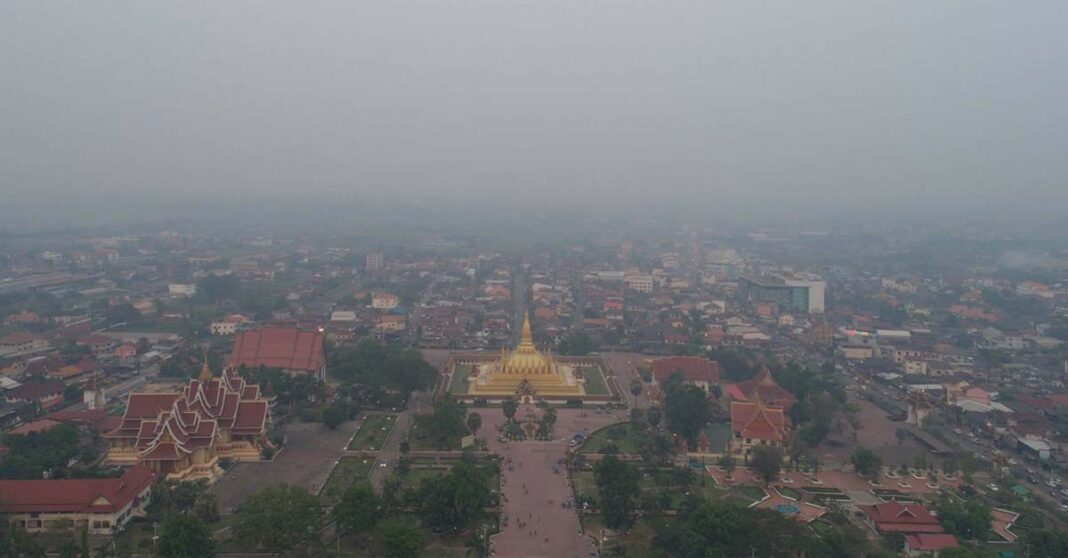The Lao government is closely monitoring air quality across the country as pollution levels rise, causing health concerns.
The Ministry of Natural Resources and Environment has begun monitoring air quality in Vientiane and Luang Prabang provinces, Vientiane Times reports.
Director-General of the ministry’s Natural Resource and Environment Research Institute, Mr. Vilasak Choundala, said in an interview with the Vientiane Times that the institute is using specialized equipment to check whether particulate matter in the air is below the accepted PM2.5 level.
The ministry has stationed equipment to monitor air quality in Vientiane at the Department of Meteorology and Hydrology, at Chao Anouvong Park, in Dongmakkhai (now under maintenance) and at Nonthong Village, as well as at a location in Luang Prabang.
PM 2.5 refers to atmospheric particulate matter with a diameter of fewer than 2.5 micrometers. Particles in this category are so small that they can only be detected with an electron microscope, but can enter blood vessels through the respiratory system, causing respiratory and cardiovascular diseases.
Vientiane Times reports that according to air-quality monitoring station readings on March 11, the level of air pollution in Vientiane was 42.2-48.2 micrograms per cubic meter of air over 24 hours, coming close to the safety level of 50 micrograms per cubic meter.
Meanwhile, readings in Luang Prabang measure 94.14 micrograms per cubic meter of air over 24 hours, exceeding safe levels and posing a danger to people’s health.
In 2019 air pollution in Vientiane reached 140 micrograms per cubic meter over 24 hours, caused by wildfires in neighboring countries, slash and burn agriculture, and garbage fires.
The Lao government maintains a policy is to ensure safe levels of air quality, assigning the Natural Resource and Environment Research Institute to monitor the volume of particulates and propose measures for ensuring clean air.
Vientiane Capital officially banned the burning of garbage in December 2019, establishing a hotline to report such offenses.
However, the practice continues and concerned residents have reported that the hotline often goes unanswered, leading to quarrels between those who illegally burn and those who suffer the health effects.



